Make a Beautiful and Long-Lasting Driftwood Centerpiece
http://decor-ideas.org 11/10/2013 11:10 Decor Ideas
Colorful succulents tucked into a pretty piece of driftwood make for a long-lasting centerpiece that brings the beauty of nature indoors. To make this piece, I planted exotic succulents and tillandsias in a piece of driftwood I found on the beach in Washington. See how I did it and how you can create your own mini driftwood garden below.
Photos by Beki Dawn Photography
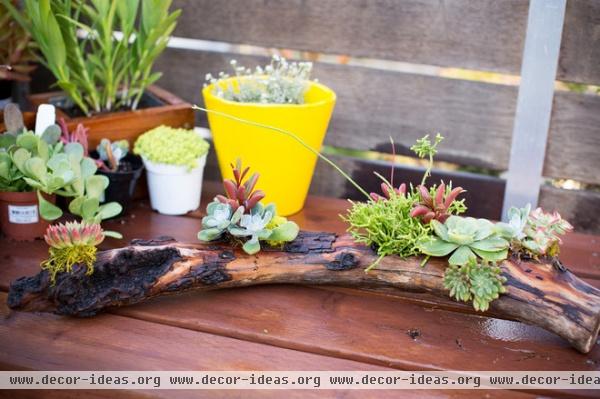
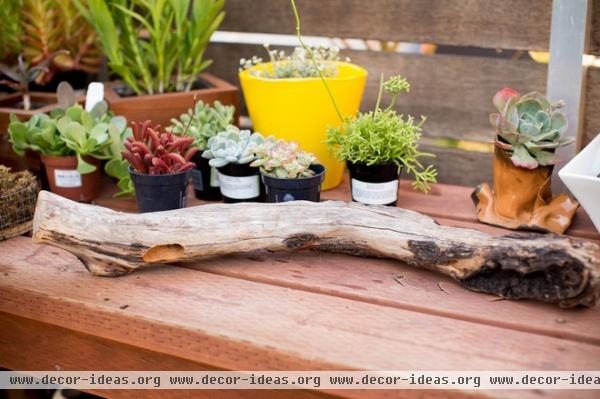
Materials:Driftwood pieces (natural, well-dried driftwood is lighter than average lumber, and you won’t need to worry about pest problems). Look for pieces that will sit well on a flat surface.Succulents (sedum, Echeveria, Crasssula). I used 2-inch pots (the smallest succulent container size available at a retail nursery); if you are using succulent cuttings, make sure the stems are at least 2 inches long. Tillandsias (optional)Succulent and palm potting mix or natural compressed coconut husk (just add water to expand the block) Sphagnum moss
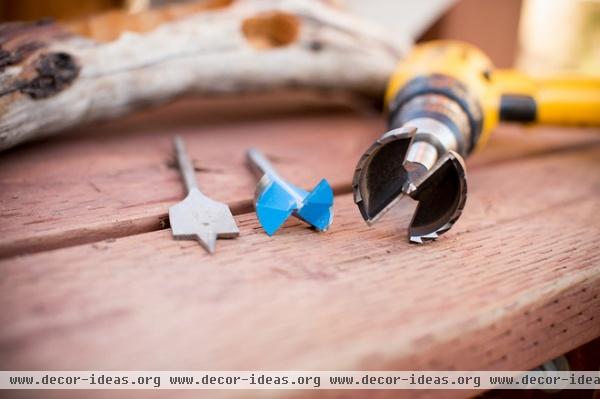
Tools and safety gear:
Electric drillDrill bits of varying diameters, preferably 2 inches (to match the succulent container size)Wooden or plastic chopstickMaskGlovesBucketWear gloves throughout the process, especially when handling sphagnum moss, and wear a mask if you are allergic to mold and dust.
Before you start, soak dried sphagnum moss in a bucket of water for five to 10 minutes. Ring out the excess water.
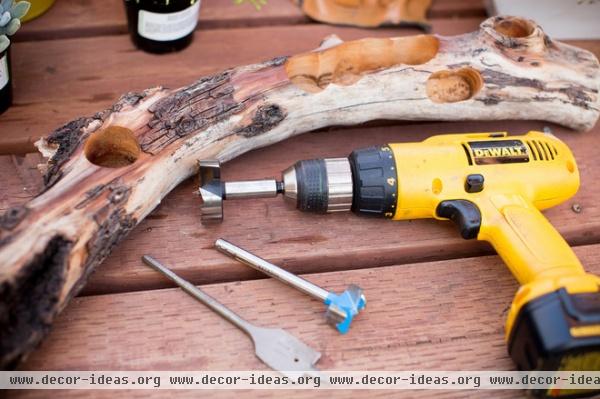
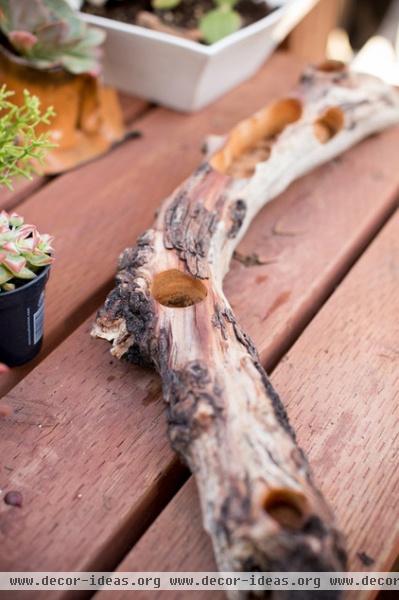
Arrange a few different types of succulents, still in their pots, on the driftwood before you drill, taking into account the driftwood size and shape. Try to use existing cavities to create as natural a look as possible.
Once you are satisfied with the arrangement, trace the bottom of the nursery pot containers on to the driftwood with a pencil as a guide for where to drill. Drill slowly into the driftwood, about 2 inches deep, making sure not to drill all the way through the bottom. Continue drilling until all the cavities are formed.
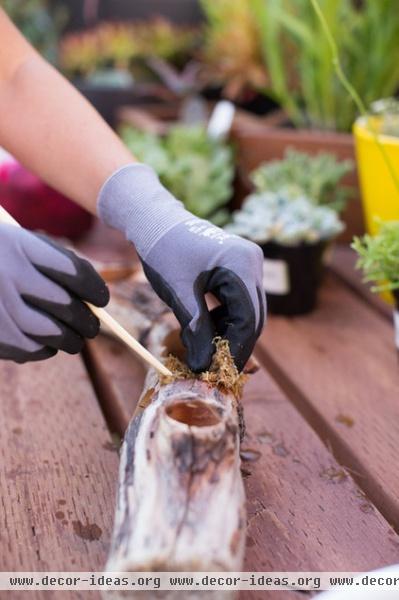
Place the potting mix or coconut husk in the bottom of each drilled hole.

Carefully remove succulents from the nursery pots and place them in the cavities. If you are using succulent cuttings, make sure to have about 2 inches of stem in each cutting, so it’s tall enough to place.
Dipping them into rooting hormone or cinnamon powder is not necessary, but you can do so if you want to speed up the rooting process.
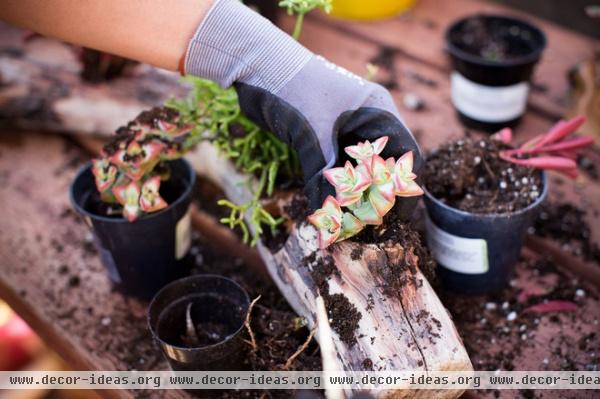
Continue filling in the cavities with succulents.
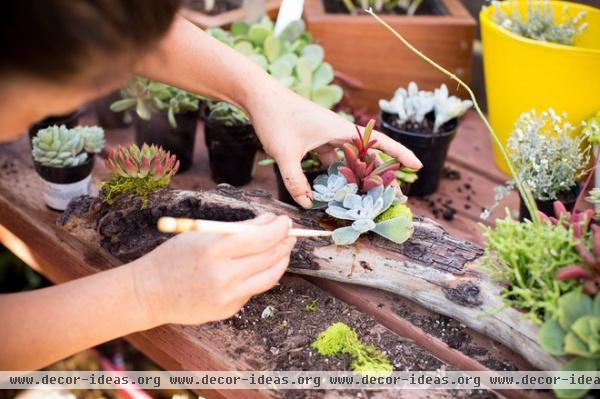
There will be some loose spaces between the succulents and the soil.
Tear small pieces of wet sphagnum moss and place it in the loose spaces with a chopstick. Continue filling in until the succulents are snug and secure.
Trim around the hanging sphagnum moss or press it back into the cavities so it doesn't show — or just leave it if you prefer a more natural moss look.
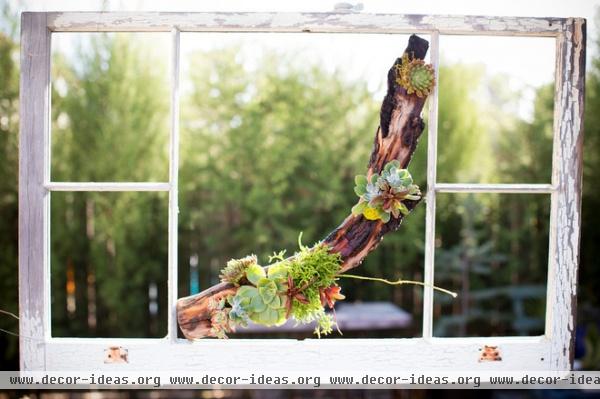
After all is in place, water thoroughly so that all the soil in the driftwood gets wet. You can use diluted organic fertilizer, but it’s not necessary.
The succulents won’t need additional adhesives if they are tightly secured. Once the plants have taken root in their new soil, you can even hang your arrangement vertically.
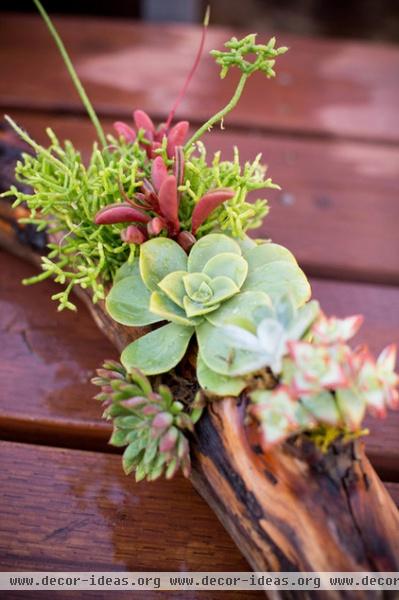
This driftwood arrangement is perfect for indoors or outdoors and will last much longer than typical flower arrangements. (I have had my succulents for more than six months with minimal care and water in San Diego.) If the succulents grow too big for the driftwood, you can take them out and plant them in the ground.
This driftwood arrangement is also great for garden parties, host and housewarming gifts, birthday parties, hanging gardens, container gardens, vertical gardens and upcycled home and garden projects.
More ideas for beautiful container gardens
Related Articles Recommended












